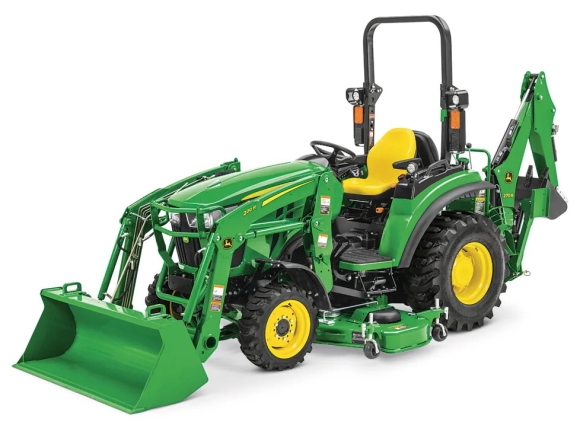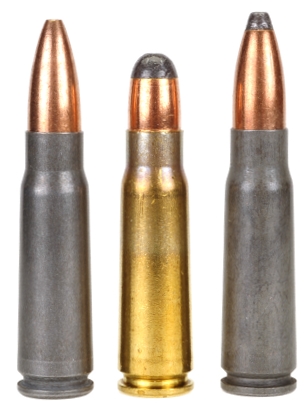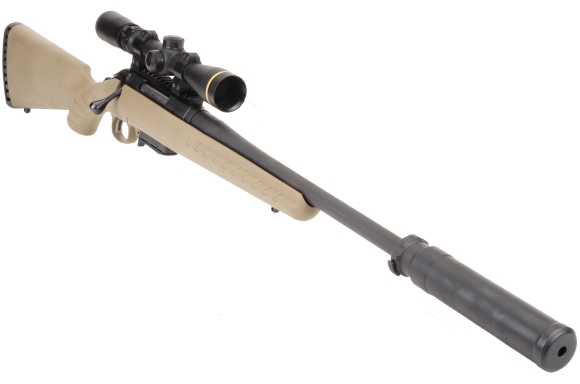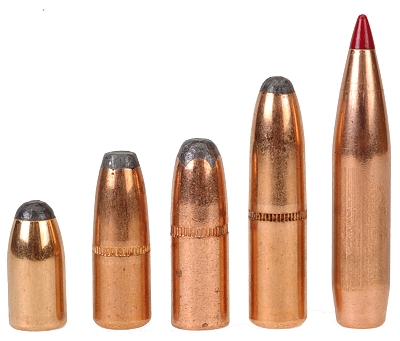
04/03/2022 -I am stuck. I can’t make up my mind if I want this John Deere 2038R… which I can’t afford, or a smaller, but similarly equipped John Deere 1025… which I also can’t afford. It isn’t the cost of the basic tractor, but rather all of the options and implements it takes to make either as capable as pictured, and even that doesn’t include a cab for shelter against Maine winters during snow removal.
I stopped in at the dealer and the sales manager was quite helpful. Me, “I need to selectively clear eighty acres of woodland. Which of these two would be best suited to the task?”. Sales Manager, “Neither”. Me, “So your saying one would be as suitable as the other?”. Sales Manager, “No I am saying they are both the wrong tool for the job?”. Me, “They are both very pretty tractors. The 2038R is clearly bigger than my neighbor’s Kubota, Are you sure these would not be a good fit?”.
Sales Manager, “Look… Joe is it? Rent a skid steer for a couple of days for $700 and save yourself maybe $45,000”. Me, “How negotiable is the tractor price?”. Sales Manager, “Not at all. I’ve been sold out since January”. Me, “So you are saying I would be getting the best possible deal if I purchased today?”. Sales manager, “Sure. Why not?”.
I do need something for landscaping this year and snow removal this coming winter. I’m just not sure it’s a $45,000 combination rake and snow shovel. But if I get either, I will need to be sporting a tractor rifle.
The Ruger Ranch Platform
The Ruger Ranch is part of the Ruger American product line, which means all of the things that make the American a refined product also apply to the Ranch version. Dual cocking cams reduce bolt cycling effort. The three lug bolt results in a 70° lift. The Ruger Power Bedding System and floating barrel assure a high degree of accuracy and it does so reliably.
Ruger’s Marksman adjustable trigger is clean with a pull range of 3 – 5 lbs. A receiver top Picatinny rail accommodates a multitude of sighting devices. Muzzles are threaded to permit mounting of any number of muzzle devices. The little rifle is available in 15 models, chambered for the 450 Bushmaster, 350 Legend, 7.62x39mm, 300 BLK, and 5.56 NATO.
The Ruger American is a handy carbine that covers hunting applications from small varmint to big game. A lot of use across many models has shown it to be accurate, reliable, fast handling, and strong enough to be the basis for many handloading project.
It has produced excellent results with the 300 BLK and supersonic and subsonic heavy bullets… long VLD 220 grain as an example. I have not had as good results with the 7.62x39mm version with subsonic loads. Supersonic loads have been good. So the difference piqued my interest and there are some things I would like to try with the 7.62x39mm.
The 300 Blackout – 7.62×39 Russian Dissimilitude
 No, I am not a commie, playing with a Russian cartridge. I am just Putin these two similar cartridges into perspective with no sociopolitical agenda to follow. And, yes, I did use the word Dissimilitude. I Google brained it, and liked it as one of the most awkward words I have encountered.
No, I am not a commie, playing with a Russian cartridge. I am just Putin these two similar cartridges into perspective with no sociopolitical agenda to follow. And, yes, I did use the word Dissimilitude. I Google brained it, and liked it as one of the most awkward words I have encountered.
| Cartridge | OAL “ | Case Length” |
Case Capacity Grains H20 |
SAAMI MAP PSI |
Bullet Diameter” |
| 300 BLK | Min 1.780 Max 2.260 |
1.368 | 25.1 | 55000 | 0.309 |
| 7.62x39mm | Min 2.150 Max 2.200 |
1.528 | 35.5 | 45000 | 0.3110 |
The 7.62x39mm was designed as an infantry small arms cartridge, chambered in semi automatic rifles, selective fire rifles and light machine guns since 1943. Its natural applications incorporate supersonic muzzle velocity. Accordingly, rifling is typically 1:9.5″
The .300 Blackout began life as the .300 Whisper, based upon the diminutive .221 Remington case, necked up to accommodate a 0.308″ bullet. Designed for use in suppressed firearms, its wide ranging specification for overall length allows the use of long, heavy high ballistic coefficient bullets over a small powder charge. Accordingly, the low speed of bullet rotation is typically 1:7″.
Both cartridges are offered with supersonic muzzle velocity for hunting. Both are offered in subsonic versions for suppressed applications. The 7.62x39mm is easy to speed up while retaining accuracy. The 300 BLK is easy to slow down while retaining accuracy essentially, because differences in twist rates deliver similar stabilizing spin rates, regardless the difference in muzzle velocity.
The Wiggle Wobble and Greenhill
The commonly used version of the Greenhill formula for determining rifling twist rate based upon, predominately, bullet length, diameter and a constant that holds true up to approximately 2,800 fps MV. How does such a simple formula solve a complex ballistics problem? It doesn’t. The original formula is…

S = gyroscopic stability
s = spin rate in radians per second squared
m = polar moment of inertia
CMα = pitching moment coefficient
a = angle of attack
t = transverse moment of inertia
d = air density
v = velocity
Well, why don’t we all use that? Because it would be a rarity to have access to all of the values required to solve the equation.The same applies to the Miller, Bowman – Howell, or McGyro where too many assumptions are made within the code or quantifying inputs are often not readily known, so users guess. So why use these calculators? They keep engineers in jobs and they allow social media to seem like a place of scientific knowledge and understanding. Yes, sort of like the politics of climate change.
How accurate are the outputs from rifling twist calculators? One of the most accurate sporting firearms I have shot was a eight pound, 450 Rigby express rifle. Sub MOA all day with just about any bullet weight and muzzle velocity variation. Calculators predicted a 1:24″ – 1:25″ twist rate. The rifle was built 1:10″.
So with calculators requiring information not readily available… bullet center of gravity, center of pressure, moving angle of attack, sometimes the best thing to do is assemble controlled lots of ammo, take the subject firearm out to the range to collect some performance data.
Where to now?
Four bullets were selected for testing for accuracy and degree of silence in concert with the Ruger Ranch rifle. Yes, probably a Dire Straits concert. Yes, I know there are five bullets pictured above, but that makes the prior statement no less accurate.  I’ve not been able to get consistently good accuracy results with this 220 grain Hornady ELD-X bullet and the 7.62x39mm with 9.5″ twist. So, to uncomplicate my life, it has been removed for the time being.
I’ve not been able to get consistently good accuracy results with this 220 grain Hornady ELD-X bullet and the 7.62x39mm with 9.5″ twist. So, to uncomplicate my life, it has been removed for the time being.
In addition, all of the bullets selected are short of stature for weight, or made for another low powder capacity cartridge or, in the case of the big round nose 220 grain Sierra (Second from right), it is a round nose bullet intended to stabilize bullets shot from rifles of the olden age of lazy twist rates.The three in the middle are intended for 30-30 WCF applications, also short for weight.
Empirical aspirations
So a bunch of supersonic and subsonic ammo is being assembled, factory ammo is on hand to set baseline performance.
I am going to see what it takes to make accurate subsonic ammunition, or at least define the difference between super and subsonic ammo accuracy. Part II, soon.




Email Notification